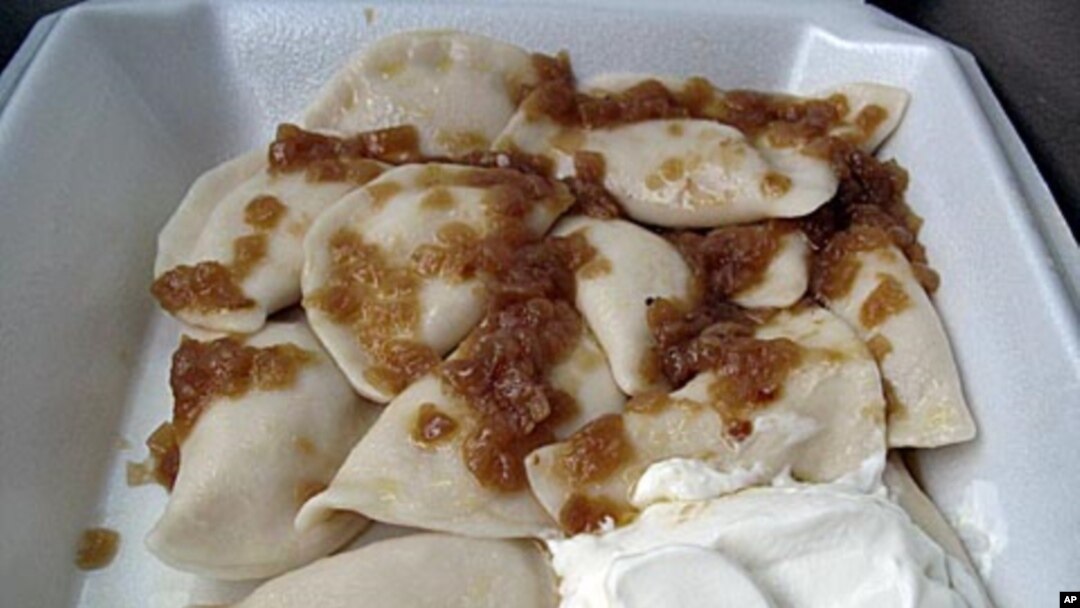For most Americans, Christmas is over, but Ukrainian, Russian and other Orthodox Christians are preparing for Christmas on January 7. And at the Christmas Eve feast, most of them will eat pierogies. These dumplings are traditionally prepared at home, but in Orthodox churches across the United States, pierogies have become something of a parish industry.
Keeping up with demand
In the basement of St. John the Baptist Ukrainian Church - a small parish of about 50 people - a few dozen people are stuffing and shaping potato pierogies by hand.
"It will be around 180 dozens, yes. And when we started, we were making 45 pounds [20 kilos] of potatoes, and that was a lot," says Myra Petrouchtchak, wife of the priest of this parish. "It took us half of Saturday. Now we make 100 pounds [45 kilos] of potatoes, and by one or two o'clock, everybody will be done."

Volunteers scoops out the smooth potato filling to make tray after tray of hand-shaped pierogies in time for Orthodox Christmas.
The church had to increase production because the pierogies developed a following beyond the parish.
"People come here and say that those pierogies remind them about their childhood. Not only Ukrainian people, some German people, Polish people. And it's like, 'Oh, my grandmother used to do that,'" says Petrouchtchak.
Petrouchtchak and her husband started weekly pierogie sales when they came to the church five years ago. They raised enough money to renovate the church basement. But from the beginning, it was about more than just food or a fundraiser.
Holding on to tradition
"It was also good for the parish as a community," says Petrouchtchak. "Because many young women didn't know how to make pierogies, or didn't have time to make pierogies at home. But here, all children can learn how to do it, and carry on the tradition."
Even the youngest members of the kids' table can shape circles of homemade dough into traditional potato pierogies.
There are many young people present who will carry on the tradition. Little kids carry trays from the kitchen while their older siblings help shape pierogies. The adults get something out of making pierogies, too.
"It's a great way to socialize," says Andrea Roelofs, a third-generation Ukrainian-American. "If they come in, and they're a little frustrated with something, by the time they leave, they're fine. It's cheaper than a psychologist."
The treat is especially delicious topped with sour cream and caramelized onions. Brian Belo came to try the pierogies, and ended up ordering three dozen for Christmas.
"I grew up with all this back in Pittsburgh, so I've been looking for it here for a couple years, and now I've found it," he says.
As it turns out, the pierogies aren't totally traditional. Usually they'd be made with a bit of cottage cheese. But in a concession to American palates, St. John's uses cheddar cheese instead.
Parish member Mariya Kamsha thinks the results might be a little too good. "My children will say, 'Mom, you know, your pierogies that you make at home, they are not quite that good as the ones that are at the church.'"
Kamsha is wistful about the change. But while the recipe may have evolved, the heart of the tradition - friends and family coming together over pierogies - is not in any danger of dying out.


